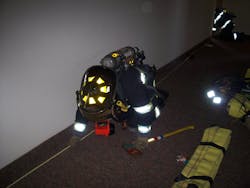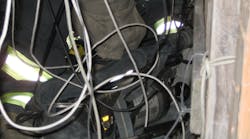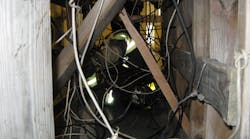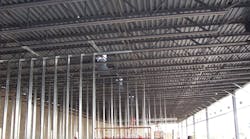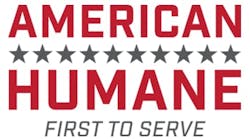In this article, we’ll cover the needed tools and equipment to which every firefighter should have immediate access. Tools and equipment form the second major aspect of safety and survival on the fireground. Today, we’ll answer the question of, “What basic tools and equipment will enhance my survival?”
As we enter the second article in this four-part series, let’s briefly take a look at what we’ll cover. Every firefighter must have a working knowledge of basic safety and survival practices. We discussed that firefighter survival can be divided into three major aspects:
- Knowledge and Personal Fitness
- Tools and Equipment
- Skills and Techniques
The first part in this series attempted to highlight the basics of Knowledge and Fitness. It discussed the critical nature of being adequately prepared, both physically and mentally. In short, we attempted to answer the question, “As it relates to my survival on the fireground, where do I begin?” Now, let’s take a look at what every firefighter should have access to as part of their own personal survival.
The Basics
Personal Protective Equipment (PPE): Every firefighter is issued his or her own set of PPE. Today’s equipment, if worn properly, will prevent terrible and debilitating injuries. From proper boots to bunker gear to helmet, gloves, and protective hood, these items must be worn as designed. For example, injuries such as hot molten tar dripping down the back of your neck from a fire above, and seemingly too distant from you to warrant wearing your gear properly, can be the cause of a painful injury that could’ve been prevented.
This PPE can also protect you from the elements such as cold and rain. Other times it will be too hot to wear for extended periods of time and at this point, members must be rotated to areas of safety to rehab. In addition, don’t forget about the threat of blood borne pathogens and other communicable diseases. You must prepare accordingly.
Gear being worn properly includes wearing your chinstrap on your helmet. Keep your helmet in place! Your helmet doesn’t do you any good if it is on the ground because it keeps falling off. Today’s helmets offer great protection, but only if it stays on your head. The same goes for the earflaps; wear them because they offer additional protection.
Some will tell you that your ears offer a signal to get out, that the room temperature is so hot that it’s time to flee. Well, this topic was actually covered by the acclaimed author Tom Brennan. He covered the fallacy of this topic in his July 1993 article in Fire Engineering Magazine, entitled Fact or Myth. In short, wear your hood and rely on training, knowledge, and skills to forewarn you of a potential flashover.
Eye Protection: Every firefighter must have eye protection! This could be the protective shield from the helmet, a set of goggles mounted on the front of the helmet, or a pair of safety glasses kept in a coat pocket. You cannot risk losing your eyesight! Redundancy here will not hurt you either. Sometimes the eye protection on our helmets is obscured due to smoke and heat damage from past fires and scratches or other damage incurred over the years. Going to an extrication incident and not being able to see clearly because of a worn helmet visor/eye shield, may result in a short cut and the member pushing it up and out of the way. This is very dangerous and hence the need for a set of safety glasses kept in a pocket! They’re cheap and offer good protection, just make sure you get a pair that offer wraparound protection. This will prevent a metal fragment from hitting you in the side of your eye or dead on. It’s just not worth losing your eyesight!
Also, depending on the nature and occupancy and the incident, you may go into occupancies that have an electric cable hanging loosely at eye level. Not seeing this until its too late could result in a very debilitating and permanent injury. Have a good pair of safety glasses with you and don’t be afraid or embarrassed to use them!
Self-Contained Breathing Apparatus (SCBA): At the start of every tour, check your SCBA. Make sure the cylinder is full … not 3/4, not 85%, make sure it is full! This is critical to your survival. Further, make sure that the heads-up display is functioning and that the Personal Alert Safety System (PASS) is in good working order. Don’t take your SCBA for granted. It will protect your respiratory system from a host of problems. Also make sure you wear it even during overhaul, when carcinogens or carbon monoxide (CO) are still ever present.
Flashlights: Carry two! Always two! Nothing can be of greater value than being able to see where you are going. Adequate lighting has saved countless firefighters from injury. The newer style rechargeable lights are great. They project a powerful beam and last for a good duration. Stick with lights that allow for hands-free operation. A light slung around you and secured with a seat belt buckle/strap allows you to disconnect it if you get entangled. A second light, on a coat or helmet, provides redundancy if the first light fails. Never get off the apparatus without two lights … day or night!
Pocket Tools and Equipment: Pocket tools such as a short length of utility rope, various hand tools, and a spanner wrench, are all great aids on the fireground. In addition to these tools, don’t forget that every firefighter must carry the basics for personal survival. Take a look at this list and see what you are missing:
A Sharp Knife: A knife has many uses, but for firefighter survival, it can be a great aid depending on the circumstances. Carry a knife that can fold up and does not threaten the wearer when he or she is crawling or moving. You don’t want to sever an artery!
Wire Cutters: These are a must! A good pair of wire cutters will alleviate many entanglements. Much of today’s construction has hundreds of feet of cable and wiring built in everywhere. It’s in the ceilings, in the walls, and in the floors. In order to be connected in this fast-paced society, our homes and businesses create traps for the unsuspecting firefighter. A hanging ceiling falls on top of you while you are searching and you are entangled in all kinds of wires, cables, phone lines, and fiber optics. Be prepared to cut yourself out of any entanglement hazard. Just beware of the threat of electrocution!
Pliers: A good pair of pliers can significantly increase fireground safety. Take for example the ability to shut off a gas supply to a home or appliance. This action alone can prevent the dangerous buildup of natural gas. This is only one example of the benefit of this tool.
Door Chocks: These cheap wooden wedges can prevent a door from locking behind you, it can prevent a door from closing on a hoseline being stretched to the “drop point,” and can allow for easy entry and egress. They’re cheap … carry a few.
Bail-Out Device/Rope/Accessories: The U.S. Fire Administration’s report Rapid Intervention Teams and How to Avoid Needing Them, recommends that all firefighters be equipped and trained in personal rope escape. This resource is downloadable from the reference at the end of this article.
This is an insurance policy in the event everything goes wrong on the fireground and you are trapped on an upper floor and must escape. Some departments are buying very high quality “bail out devices” for each member. With proper training, these enhance the survival of their people. The few hundred dollars spent per member is analogous to the expression “an ounce of prevention is worth a pound of cure.”
If you don’t have these devices, there are other means that departments have used or relied on. For example, a pouch containing 50 feet of personal escape rope/life safety rope stored in a turnout pocket with a carabiner offers a last-ditch method of escape. The U.S. Fire Administration report discusses this method in greater depth.
This survival tool deals with elevation differences and great care and thought should go into this. Introducing this 3rd dimension (height) puts firefighters at great risk. Being 30 or 40 feet away from safety and knowing you can’t get there safely must be a terrible feeling. Again, proper preparation, research, equipping, and training by your department can give you and your counterparts a huge insurance policy!
Search Rope Bag: Here is another great insurance policy. Look at all the occupancies in your first-alarm response area, not only commercial occupancies, but also some of these huge private dwellings. What about a maze like basement of a larger private dwelling? There’s definitely the chance for getting lost here. How many of the occupancies in your first-alarm response area can cause you a disorientation problem if you got away from the wall or your reference point? A team of two firefighters entering one of these occupancies should have a 200-foot (3/8”) search rope with them! Deploy it from an area of refuge such as outside (for a cellar fire or the first floor) or the floor below (for a fire on the upper floor) (see Figure 1). Such a bag is lightweight.
Tools: If your not advancing a hoseline make sure you have tools. Being lost or separated could mean that you must breach a wall to escape, or force a door.
Portable Radio: The portable radio is your lifeline! Check it at the start of your shift, make sure it is on the proper channel, and make sure it doesn’t have a dead battery in it! If the department only has a few, make sure that every team has one portable radio. The portable radio is critical. If you get into trouble it’s easier to call for help by radio, far better than screaming.
Summary
The objective of this article was to answer the question, “What basic tools and equipment will enhance my survival?” We covered some of the very basics, but the basics are critical to your survival. Take a look at the list here and read from the fine authors identified in the references. What you put into effect today may be the reason you go home to your family tomorrow.
The final two parts of this series will cover the basic skills and techniques that all firefighters have to be familiar with. The next question we’ll answer is, “What skills should I have a working knowledge of?” The topics identified will make great drill-ground opportunities.
References and Resources
- U.S. Fire Administration Report: Rapid Intervention Teams and How to Avoid Needing Them. USFA-TR-123 / March 2003. http://www.in.gov/dhs/files/rapidintervention.pdf
- Norman, John. Fire Officer’s Handbook of Tactics 3rd Edition, Penwell Publications, 2005.
ARMAND F. GUZZI JR. has been a member of the fire service since 1987. He is a career fire lieutenant with the City of Long Branch, NJ, Fire Department and is the deputy director of the Monmouth County, NJ, Fire Academy where he has taught for over 20 years. He has a masters degree in management and undergraduate degrees in fire science, education, and business administration. View all of Armand's articles here. He can be reached via e-mail at [email protected] or [email protected].
